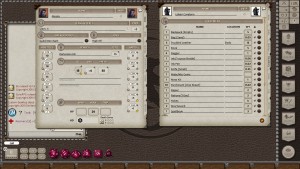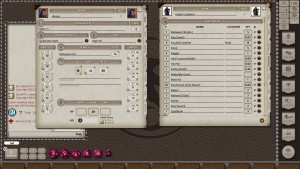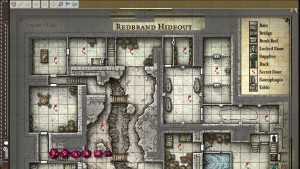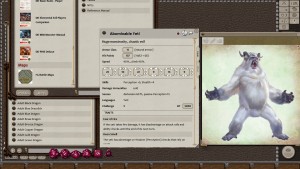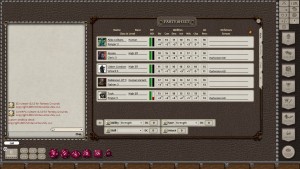One evening after fighter practice while we were enjoying a beer at “church”, Patrick and I were discussing income from investments. I talked about my “selling puts” strategy, and promised him I would explain it in more detail. I figured why not explain it here so more can benefit and comment.
I will start by saying that using options is by definition using leverage. One option represents 100 shares. As such, gains and losses are magnified. As well, options create “ordinary income” and you will be taxed at your full income tax rate for the gains you make (unless you do this in a 401(k) or IRA account). This is USA tax advice, obviously varies by country.
To do the strategy I will describe, you need to have basic option functionality for your account and available margin. Brokerage fees/commissions tend to be higher than stock transactions.
First, here are some base statistics for options. There is an erroneous statistic that is quoted that 90% of options expire worthless. That is actually false. 10% are exercised. That does not mean that 90% expire worthless.
10% are exercised (in the money at expiration date, seller could have made a gain or loss)
55%-60% are closed out before expiration (could be at a gain or loss)
30-35% expired worthless (seller makes 100% gain if held to expiration)
So the ratio is still 3-1 for exercised compared to expired worthless, but the 90% “internet truth” is wrong.
I would hope before anyone trades in options that you have a basic understanding of them, but here is a simple explanation.
An option is a right to buy (call) or sell (put) a stock at a certain price (strike price) before a certain time (expiration date). “American” style options can be exercised at any time. Selling an option is going short the option (you hope the option goes down in price). Buying an option is going long an option (you hope that an option goes up in value). When you buy an option, maximum loss is your investment. When you sell an option, you can lose much more than the price you receive.
Options have two components of value – actual value which is the actual price of the underlying security less the strike price of the option and time value which is the trading price of the option less the actual value of the option. Time value is a complex relationship between the volatility of the underlying stock and the actual remaining time. Valuing options is typically done via a Black-Scholes model (there are even more modern valuation methods) and there are a huge number of firms that specialize in trading differences between the market value of options and the valuation model. In general, if you trade liquid options on stocks with good value, then the market price tends to revert to the model price because of the automated buyers and sellers.
That was a pretty long intro. There is just too much background information on options that I could explain, but that should cover the basics. Here is a book that can help. I prefer Options as a Strategic Investment, but it is way more expensive.
http://www.amazon.com/Understanding-Options-2E-Michael-Sincere/dp/0071817840/ref=pd_sim_14_2?ie=UTF8&dpID=51q5Y48G6JL&dpSrc=sims&preST=_AC_UL160_SR105%2C160_&refRID=0EYQMNRN4D2J8J79SE4S
My strategy is to sell slightly out of the money Put contracts with a fairly short time to expiration date. This a bullish to neutral strategy as you hope the stock stays the same price or goes up (or goes down less than the “slightly out of the money gap”).
Breaking it down, you need to do the following:
- Pick a stock
- Pick the time you want the option to be outstanding
- Pick the strike price of the option
You also need sufficient margin in your account to support the trade.
My strategy has two built in flaws. Because you use shorter duration contracts, you will do more transactions in a year and incur higher commission expenses. Because I tend to use shorter time durations (one month to one week), there is less “time value” available.
The other basic flaw is that you can make a lot of small wins and then lose all of in in one trade if the stock moves much larger than expected downwards. I try and reduce this risk by carefully selecting when the trade will happen, but this is the basic downside to any options trade.
This is a leveraged, short time duration strategy. It has a slightly bullish orientation. So you need to select a stock that you have some confidence that it will at least be stable in the period you choose and it probably should be a stock that you understand well and that you would be comfortable owning. However, this is not my other selling puts strategy (backing into owning a stock that you like but is too expensive). This is an income generating strategy.
One potential source for a stock to pick is the S&P Platinum Portfolio. It is S&P’s “best of the best” list. The list is not perfect, of course, but it does have a very long track record of good performance versus the market.
You can also pick an index or an ETF that tracks an index. Many stable stocks track the market in the short term anyways, so the overall market is as good a choice as any.
Finally, you want a stock that trades pretty often and has a lot of option trades. Otherwise spreads are quite wide and it is hard to enter into and close trades.
I personally pick AT&T. I own the stock, follow it pretty closely, it trades a lot and options are liquid, in a disaster it pays a good dividend anyways, and it is completely a USA business so less need to worry about something happening overseas. It is pretty stable overall so there is less time value premium.
For purposes of this example, I will also look at Apple and SPY (Vanguard S&P 500 tracking ETF). I have included the option chains (from TD Ameritrade) from the day I am typing this plus the current stock price and the last three months of historical prices (Yahoo Finance is great to get those).
I could be a smarter blogger and put all these tables at the end of the blog, but this is actually important. If you want to follow this type of strategy, you need to spend some time studying this type of information to get comfortable with it. If you don’t spend the time, I recommend the don’t pass line at the nearest casino with reasonable craps rules. After options commissions, “trading” without knowledge and a plan is probably not as good as the odds at the don’t pass line.
T 5 days until expiration ($33.51)
T 26 days until expiration ($33.51)
AAPL 5 days until expiration ($119.5)
|
|
Puts |
|
Bid |
|
Ask |
|
Last |
|
Change |
|
Vol |
|
Op Int |
|
|
117.0 Put |
|
0.66 |
|
0.68 |
|
0.66 |
|
0.00 |
|
7,894 |
|
2,084 |
|
|
118.0 Put |
|
0.97 |
|
1.00 |
|
0.98 |
|
0.01 |
|
6,267 |
|
3,274 |
|
|
119.0 Put |
|
1.41 |
|
1.43 |
|
1.43 |
|
0.04 |
|
5,965 |
|
2,766 |
|
|
120.0 Put |
|
1.92 |
|
1.98 |
|
1.92 |
|
0.00 |
|
11,584 |
|
3,860 |
|
|
121.0 Put |
|
2.58 |
|
2.65 |
|
2.53 |
|
-0.05 |
|
4,205 |
|
1,327 |
|
|
122.0 Put |
|
3.35 |
|
3.45 |
|
3.30 |
|
-0.05 |
|
1,158 |
|
593 |
|
AAPl 26 days until expiration ($119.5)
SPY 5 days until expiration ($207.93)
|
|
Puts |
|
Bid |
|
Ask |
|
Last |
|
Change |
|
Vol |
|
Op Int |
|
|
206.5 Put |
|
0.89 |
|
0.97 |
|
0.93 |
|
-0.04 |
|
9,073 |
|
11,100 |
|
|
207.0 Put |
|
1.08 |
|
1.12 |
|
1.09 |
|
-0.03 |
|
18,145 |
|
15,832 |
|
|
207.5 Put |
|
1.21 |
|
1.29 |
|
1.29 |
|
-0.01 |
|
7,246 |
|
5,922 |
|
|
208.0 Put |
|
1.43 |
|
1.48 |
|
1.46 |
|
0.01 |
|
32,493 |
|
8,987 |
|
|
208.5 Put |
|
1.61 |
|
1.70 |
|
1.77 |
|
0.07 |
|
14,330 |
|
5,232 |
|
|
208.8 Put |
|
1.14 |
|
1.85 |
|
1.10 |
|
-0.73 |
|
0 |
|
56 |
|
SPY 26 days until expiration ($207.93)
T historical prices
| Date |
Open |
High |
Low |
Close |
Volume |
Adj Close* |
| Oct 30, 2015 |
33.62 |
33.75 |
33.51 |
33.51 |
24,420,900 |
33.51 |
| Oct 29, 2015 |
33.48 |
33.67 |
33.28 |
33.55 |
17,746,000 |
33.55 |
| Oct 28, 2015 |
33.36 |
33.60 |
33.13 |
33.42 |
27,780,400 |
33.42 |
| Oct 27, 2015 |
33.57 |
33.61 |
33.16 |
33.21 |
24,356,700 |
33.21 |
| Oct 26, 2015 |
33.75 |
33.76 |
33.48 |
33.66 |
25,400,300 |
33.66 |
| Oct 23, 2015 |
34.70 |
34.74 |
33.62 |
33.74 |
46,213,200 |
33.74 |
| Oct 22, 2015 |
33.46 |
34.16 |
33.46 |
33.96 |
32,707,100 |
33.96 |
| Oct 21, 2015 |
33.88 |
33.94 |
33.33 |
33.60 |
27,215,000 |
33.60 |
| Oct 20, 2015 |
33.59 |
33.85 |
33.52 |
33.75 |
20,014,100 |
33.75 |
| Oct 19, 2015 |
33.63 |
33.69 |
33.42 |
33.63 |
27,757,500 |
33.63 |
| Oct 16, 2015 |
33.75 |
33.86 |
33.54 |
33.83 |
32,868,400 |
33.83 |
| Oct 15, 2015 |
33.33 |
33.50 |
33.20 |
33.49 |
18,564,200 |
33.49 |
| Oct 14, 2015 |
33.23 |
33.39 |
33.10 |
33.27 |
23,282,700 |
33.27 |
| Oct 13, 2015 |
33.19 |
33.29 |
33.06 |
33.22 |
22,063,400 |
33.22 |
| Oct 12, 2015 |
33.20 |
33.31 |
33.07 |
33.30 |
14,109,800 |
33.30 |
| Oct 9, 2015 |
33.42 |
33.52 |
33.00 |
33.14 |
19,351,300 |
33.14 |
| Oct 8, 2015 |
33.11 |
33.41 |
32.87 |
33.40 |
17,305,200 |
33.40 |
| Oct 7, 2015 |
33.07 |
33.34 |
33.01 |
33.12 |
21,010,300 |
33.12 |
| Oct 7, 2015 |
0.47 Dividend |
| Oct 6, 2015 |
33.50 |
33.52 |
33.25 |
33.31 |
27,867,000 |
32.84 |
| Oct 5, 2015 |
32.98 |
33.49 |
32.97 |
33.43 |
27,876,700 |
32.96 |
| Oct 2, 2015 |
32.34 |
32.64 |
32.19 |
32.64 |
28,505,900 |
32.18 |
| Oct 1, 2015 |
32.48 |
32.64 |
32.17 |
32.53 |
30,815,500 |
32.07 |
| Sep 30, 2015 |
32.36 |
32.71 |
32.24 |
32.58 |
34,815,500 |
32.12 |
| Sep 29, 2015 |
31.99 |
32.18 |
31.85 |
32.07 |
33,785,200 |
31.62 |
| Sep 28, 2015 |
32.26 |
32.34 |
31.88 |
31.90 |
35,924,900 |
31.45 |
| Sep 25, 2015 |
32.27 |
32.70 |
32.16 |
32.33 |
27,104,200 |
31.87 |
| Sep 24, 2015 |
32.02 |
32.23 |
31.95 |
32.11 |
24,741,400 |
31.66 |
| Sep 23, 2015 |
32.29 |
32.34 |
32.04 |
32.20 |
15,739,200 |
31.75 |
| Sep 22, 2015 |
32.32 |
32.45 |
32.13 |
32.27 |
25,518,700 |
31.81 |
| Sep 21, 2015 |
32.55 |
32.69 |
32.45 |
32.56 |
19,870,300 |
32.10 |
| Sep 18, 2015 |
32.68 |
32.79 |
32.41 |
32.55 |
44,627,200 |
32.09 |
| Sep 17, 2015 |
32.73 |
33.14 |
32.41 |
32.78 |
37,922,100 |
32.32 |
| Sep 16, 2015 |
32.86 |
33.10 |
32.76 |
32.94 |
23,514,200 |
32.48 |
| Sep 15, 2015 |
32.68 |
32.93 |
32.54 |
32.86 |
22,371,700 |
32.40 |
| Sep 14, 2015 |
32.74 |
32.78 |
32.51 |
32.55 |
18,504,700 |
32.09 |
| Sep 11, 2015 |
32.73 |
32.78 |
32.56 |
32.72 |
17,626,900 |
32.26 |
| Sep 10, 2015 |
32.77 |
32.84 |
32.55 |
32.75 |
25,602,300 |
32.29 |
| Sep 9, 2015 |
33.40 |
33.50 |
32.72 |
32.78 |
22,559,100 |
32.32 |
| Sep 8, 2015 |
32.95 |
33.19 |
32.81 |
33.14 |
18,851,000 |
32.67 |
| Sep 4, 2015 |
32.68 |
32.78 |
32.35 |
32.56 |
29,318,900 |
32.10 |
| Sep 3, 2015 |
32.97 |
33.24 |
32.92 |
33.04 |
22,833,400 |
32.57 |
| Sep 2, 2015 |
32.97 |
32.97 |
32.50 |
32.82 |
24,093,000 |
32.36 |
| Sep 1, 2015 |
32.60 |
32.79 |
32.16 |
32.32 |
33,048,000 |
31.86 |
| Aug 31, 2015 |
33.20 |
33.28 |
33.01 |
33.20 |
22,286,500 |
32.73 |
| Aug 28, 2015 |
33.34 |
33.45 |
33.10 |
33.29 |
24,154,000 |
32.82 |
| Aug 27, 2015 |
33.01 |
33.49 |
32.82 |
33.44 |
42,589,900 |
32.97 |
| Aug 26, 2015 |
32.36 |
32.85 |
32.01 |
32.69 |
49,631,200 |
32.23 |
| Aug 25, 2015 |
33.11 |
33.11 |
31.77 |
31.80 |
50,674,200 |
31.35 |
| Aug 24, 2015 |
32.18 |
32.69 |
30.97 |
32.37 |
77,231,300 |
31.91 |
| Aug 21, 2015 |
33.70 |
33.95 |
33.38 |
33.38 |
41,636,700 |
32.91 |
| Aug 20, 2015 |
34.17 |
34.46 |
33.95 |
33.95 |
38,363,400 |
33.47 |
| Aug 19, 2015 |
34.30 |
34.50 |
34.07 |
34.36 |
21,139,300 |
33.88 |
| Aug 18, 2015 |
34.16 |
34.43 |
34.12 |
34.35 |
20,538,200 |
33.87 |
| Aug 17, 2015 |
33.96 |
34.23 |
33.90 |
34.23 |
21,050,600 |
33.75 |
| Aug 14, 2015 |
33.91 |
34.05 |
33.78 |
34.05 |
22,759,600 |
33.57 |
| Aug 13, 2015 |
34.01 |
34.17 |
33.79 |
33.81 |
35,521,100 |
33.33 |
| Aug 12, 2015 |
33.86 |
34.07 |
33.45 |
34.02 |
61,974,500 |
33.54 |
| Aug 11, 2015 |
34.60 |
34.96 |
34.57 |
34.65 |
35,402,700 |
34.16 |
| Aug 10, 2015 |
34.30 |
34.78 |
34.20 |
34.78 |
29,179,800 |
34.29 |
| Aug 7, 2015 |
34.11 |
34.26 |
34.04 |
34.21 |
25,627,600 |
33.73 |
| Aug 6, 2015 |
34.55 |
34.59 |
33.95 |
34.24 |
32,734,200 |
33.76 |
| Aug 5, 2015 |
34.79 |
34.83 |
34.51 |
34.57 |
22,837,600 |
34.08 |
| Aug 4, 2015 |
34.79 |
34.80 |
34.50 |
34.58 |
26,249,900 |
34.09 |
| Aug 3, 2015 |
34.95 |
35.02 |
34.50 |
34.66 |
29,677,600 |
34.17 |
| Jul 31, 2015 |
34.94 |
34.99 |
34.72 |
34.74 |
29,880,900 |
34.25 |
| Jul 30, 2015 |
34.86 |
34.89 |
34.68 |
34.80 |
25,958,800 |
34.31 |
AAPL historical prices
| Date |
Open |
High |
Low |
Close |
Volume |
Adj Close* |
| Oct 30, 2015 |
120.99 |
121.22 |
119.45 |
119.50 |
48,812,000 |
119.50 |
| Oct 29, 2015 |
118.70 |
120.69 |
118.27 |
120.53 |
50,240,800 |
120.53 |
| Oct 28, 2015 |
116.93 |
119.30 |
116.06 |
119.27 |
85,023,300 |
119.27 |
| Oct 27, 2015 |
115.40 |
116.54 |
113.99 |
114.55 |
57,953,600 |
114.55 |
| Oct 26, 2015 |
118.08 |
118.13 |
114.92 |
115.28 |
66,019,500 |
115.28 |
| Oct 23, 2015 |
116.70 |
119.23 |
116.33 |
119.08 |
59,139,600 |
119.08 |
| Oct 22, 2015 |
114.33 |
115.50 |
114.10 |
115.50 |
41,272,700 |
115.50 |
| Oct 21, 2015 |
114.00 |
115.58 |
113.70 |
113.76 |
41,795,200 |
113.76 |
| Oct 20, 2015 |
111.34 |
114.17 |
110.82 |
113.77 |
48,778,800 |
113.77 |
| Oct 19, 2015 |
110.80 |
111.75 |
110.11 |
111.73 |
29,606,100 |
111.73 |
| Oct 16, 2015 |
111.78 |
112.00 |
110.53 |
111.04 |
38,236,300 |
111.04 |
| Oct 15, 2015 |
110.93 |
112.10 |
110.49 |
111.86 |
37,341,000 |
111.86 |
| Oct 14, 2015 |
111.29 |
111.52 |
109.56 |
110.21 |
44,325,600 |
110.21 |
| Oct 13, 2015 |
110.82 |
112.45 |
110.68 |
111.79 |
32,424,000 |
111.79 |
| Oct 12, 2015 |
112.73 |
112.75 |
111.44 |
111.60 |
30,114,400 |
111.60 |
| Oct 9, 2015 |
110.00 |
112.28 |
109.49 |
112.12 |
52,533,800 |
112.12 |
| Oct 8, 2015 |
110.19 |
110.19 |
108.21 |
109.50 |
61,698,500 |
109.50 |
| Oct 7, 2015 |
111.74 |
111.77 |
109.41 |
110.78 |
46,602,600 |
110.78 |
| Oct 6, 2015 |
110.63 |
111.74 |
109.77 |
111.31 |
48,196,800 |
111.31 |
| Oct 5, 2015 |
109.88 |
111.37 |
109.07 |
110.78 |
51,723,100 |
110.78 |
| Oct 2, 2015 |
108.01 |
111.01 |
107.55 |
110.38 |
57,560,400 |
110.38 |
| Oct 1, 2015 |
109.07 |
109.62 |
107.31 |
109.58 |
63,748,000 |
109.58 |
| Sep 30, 2015 |
110.17 |
111.54 |
108.73 |
110.30 |
66,105,000 |
110.30 |
| Sep 29, 2015 |
112.83 |
113.51 |
107.86 |
109.06 |
73,135,900 |
109.06 |
| Sep 28, 2015 |
113.85 |
114.57 |
112.44 |
112.44 |
51,723,900 |
112.44 |
| Sep 25, 2015 |
116.44 |
116.69 |
114.02 |
114.71 |
55,842,200 |
114.71 |
| Sep 24, 2015 |
113.25 |
115.50 |
112.37 |
115.00 |
49,810,600 |
115.00 |
| Sep 23, 2015 |
113.63 |
114.72 |
113.30 |
114.32 |
35,645,700 |
114.32 |
| Sep 22, 2015 |
113.38 |
114.18 |
112.52 |
113.40 |
49,809,000 |
113.40 |
| Sep 21, 2015 |
113.67 |
115.37 |
113.66 |
115.21 |
46,554,300 |
115.21 |
| Sep 18, 2015 |
112.21 |
114.30 |
111.87 |
113.45 |
73,419,000 |
113.45 |
| Sep 17, 2015 |
115.66 |
116.49 |
113.72 |
113.92 |
63,462,700 |
113.92 |
| Sep 16, 2015 |
116.25 |
116.54 |
115.44 |
116.41 |
36,910,000 |
116.41 |
| Sep 15, 2015 |
115.93 |
116.53 |
114.42 |
116.28 |
43,004,100 |
116.28 |
| Sep 14, 2015 |
116.58 |
116.89 |
114.86 |
115.31 |
58,201,900 |
115.31 |
| Sep 11, 2015 |
111.79 |
114.21 |
111.76 |
114.21 |
49,441,800 |
114.21 |
| Sep 10, 2015 |
110.27 |
113.28 |
109.90 |
112.57 |
62,675,200 |
112.57 |
| Sep 9, 2015 |
113.76 |
114.02 |
109.77 |
110.15 |
84,344,400 |
110.15 |
| Sep 8, 2015 |
111.75 |
112.56 |
110.32 |
112.31 |
54,114,200 |
112.31 |
| Sep 4, 2015 |
108.97 |
110.45 |
108.51 |
109.27 |
49,963,900 |
109.27 |
| Sep 3, 2015 |
112.49 |
112.78 |
110.04 |
110.37 |
52,906,400 |
110.37 |
| Sep 2, 2015 |
110.23 |
112.34 |
109.13 |
112.34 |
61,888,800 |
112.34 |
| Sep 1, 2015 |
110.15 |
111.88 |
107.36 |
107.72 |
76,845,900 |
107.72 |
| Aug 31, 2015 |
112.03 |
114.53 |
112.00 |
112.76 |
56,229,300 |
112.76 |
| Aug 28, 2015 |
112.17 |
113.31 |
111.54 |
113.29 |
53,164,400 |
113.29 |
| Aug 27, 2015 |
112.23 |
113.24 |
110.02 |
112.92 |
84,616,100 |
112.92 |
| Aug 26, 2015 |
107.09 |
109.89 |
105.05 |
109.69 |
96,774,600 |
109.69 |
| Aug 25, 2015 |
111.11 |
111.11 |
103.50 |
103.74 |
103,601,600 |
103.74 |
| Aug 24, 2015 |
94.87 |
108.80 |
92.00 |
103.12 |
162,206,300 |
103.12 |
| Aug 21, 2015 |
110.43 |
111.90 |
105.65 |
105.76 |
128,275,500 |
105.76 |
| Aug 20, 2015 |
114.08 |
114.35 |
111.63 |
112.65 |
68,501,600 |
112.65 |
| Aug 19, 2015 |
116.10 |
116.52 |
114.68 |
115.01 |
47,445,700 |
115.01 |
| Aug 18, 2015 |
116.43 |
117.44 |
116.01 |
116.50 |
34,560,700 |
116.50 |
| Aug 17, 2015 |
116.04 |
117.65 |
115.50 |
117.16 |
40,884,700 |
117.16 |
| Aug 14, 2015 |
114.32 |
116.31 |
114.01 |
115.96 |
42,929,500 |
115.96 |
| Aug 13, 2015 |
116.04 |
116.40 |
114.54 |
115.15 |
48,535,800 |
115.15 |
| Aug 12, 2015 |
112.53 |
115.42 |
109.63 |
115.24 |
101,217,500 |
115.24 |
| Aug 11, 2015 |
117.81 |
118.18 |
113.33 |
113.49 |
97,082,800 |
113.49 |
| Aug 10, 2015 |
116.53 |
119.99 |
116.53 |
119.72 |
54,951,600 |
119.72 |
| Aug 7, 2015 |
114.58 |
116.25 |
114.50 |
115.52 |
38,670,400 |
115.52 |
| Aug 6, 2015 |
115.97 |
116.50 |
114.12 |
115.13 |
52,903,000 |
115.13 |
| Aug 6, 2015 |
0.52 Dividend |
| Aug 5, 2015 |
112.95 |
117.44 |
112.10 |
115.40 |
99,312,600 |
114.88 |
| Aug 4, 2015 |
117.42 |
117.70 |
113.25 |
114.64 |
124,138,600 |
114.12 |
| Aug 3, 2015 |
121.50 |
122.57 |
117.52 |
118.44 |
69,976,000 |
117.91 |
| Jul 31, 2015 |
122.60 |
122.64 |
120.91 |
121.30 |
42,885,000 |
120.75 |
| Jul 30, 2015 |
122.32 |
122.57 |
121.71 |
122.37 |
33,628,300 |
121.82 |
SPY historical prices
| Date |
Open |
High |
Low |
Close |
Volume |
Adj Close* |
| Oct 30, 2015 |
209.06 |
209.44 |
207.74 |
207.87 |
125,338,300 |
207.87 |
| Oct 29, 2015 |
208.35 |
209.27 |
208.21 |
208.89 |
84,727,800 |
208.89 |
| Oct 28, 2015 |
207.00 |
208.98 |
206.21 |
208.94 |
132,528,000 |
208.94 |
| Oct 27, 2015 |
206.20 |
207.00 |
205.79 |
206.57 |
74,930,600 |
206.57 |
| Oct 26, 2015 |
207.30 |
207.37 |
206.56 |
206.99 |
66,254,500 |
206.99 |
| Oct 23, 2015 |
207.25 |
207.95 |
206.30 |
207.52 |
138,355,700 |
207.52 |
| Oct 22, 2015 |
202.98 |
205.51 |
201.85 |
205.21 |
164,941,500 |
205.21 |
| Oct 21, 2015 |
203.61 |
203.79 |
201.65 |
201.87 |
99,149,500 |
201.87 |
| Oct 20, 2015 |
202.85 |
203.84 |
202.55 |
203.09 |
75,598,000 |
203.09 |
| Oct 19, 2015 |
202.50 |
203.37 |
202.13 |
203.32 |
73,106,800 |
203.32 |
| Oct 16, 2015 |
202.83 |
203.29 |
201.92 |
203.27 |
109,692,900 |
203.27 |
| Oct 15, 2015 |
200.08 |
202.36 |
199.64 |
202.29 |
125,812,600 |
202.29 |
| Oct 14, 2015 |
200.18 |
200.87 |
198.94 |
199.30 |
95,532,400 |
199.30 |
| Oct 13, 2015 |
200.65 |
202.16 |
200.05 |
200.18 |
83,578,000 |
200.18 |
| Oct 12, 2015 |
201.42 |
201.76 |
200.91 |
201.59 |
55,425,200 |
201.59 |
| Oct 9, 2015 |
201.38 |
201.90 |
200.58 |
201.40 |
94,899,000 |
201.40 |
| Oct 8, 2015 |
199.41 |
201.55 |
198.59 |
201.20 |
148,387,100 |
201.20 |
| Oct 7, 2015 |
198.90 |
199.83 |
197.48 |
199.43 |
120,246,700 |
199.43 |
| Oct 6, 2015 |
198.31 |
198.98 |
197.00 |
197.81 |
106,144,200 |
197.81 |
| Oct 5, 2015 |
196.46 |
198.74 |
196.33 |
198.48 |
122,213,200 |
198.48 |
| Oct 2, 2015 |
189.77 |
195.03 |
189.12 |
194.99 |
206,129,500 |
194.99 |
| Oct 1, 2015 |
192.08 |
192.49 |
189.82 |
192.16 |
127,828,700 |
192.16 |
| Sep 30, 2015 |
190.37 |
191.83 |
189.44 |
191.59 |
152,593,200 |
191.59 |
| Sep 29, 2015 |
188.27 |
189.74 |
186.93 |
188.08 |
152,279,900 |
188.08 |
| Sep 28, 2015 |
191.78 |
191.91 |
187.64 |
187.91 |
158,514,500 |
187.91 |
| Sep 25, 2015 |
194.64 |
195.00 |
191.81 |
192.87 |
142,052,900 |
192.87 |
| Sep 24, 2015 |
192.15 |
193.45 |
190.56 |
192.93 |
159,378,800 |
192.93 |
| Sep 23, 2015 |
194.11 |
194.67 |
192.91 |
193.60 |
92,790,600 |
193.60 |
| Sep 22, 2015 |
193.88 |
194.46 |
192.56 |
193.90 |
153,890,900 |
193.90 |
| Sep 21, 2015 |
196.44 |
197.68 |
195.21 |
196.44 |
105,726,200 |
196.44 |
| Sep 18, 2015 |
195.71 |
198.68 |
194.96 |
195.36 |
223,657,500 |
195.36 |
| Sep 18, 2015 |
1.033 Dividend |
| Sep 17, 2015 |
200.02 |
202.89 |
199.28 |
199.70 |
276,046,600 |
198.67 |
| Sep 16, 2015 |
198.82 |
200.41 |
198.41 |
200.14 |
99,581,600 |
199.10 |
| Sep 15, 2015 |
196.61 |
198.99 |
195.96 |
198.45 |
113,806,200 |
197.42 |
| Sep 14, 2015 |
196.95 |
197.01 |
195.43 |
195.98 |
79,452,000 |
194.97 |
| Sep 11, 2015 |
195.38 |
196.82 |
194.53 |
196.81 |
119,691,200 |
195.79 |
| Sep 10, 2015 |
194.56 |
197.22 |
194.25 |
195.85 |
158,611,100 |
194.84 |
| Sep 9, 2015 |
199.32 |
199.47 |
194.35 |
194.76 |
149,347,700 |
193.75 |
| Sep 8, 2015 |
195.94 |
197.61 |
195.17 |
197.46 |
116,025,700 |
196.44 |
| Sep 4, 2015 |
192.85 |
193.86 |
191.61 |
192.59 |
207,081,000 |
191.59 |
| Sep 3, 2015 |
196.26 |
198.05 |
194.96 |
195.65 |
152,087,800 |
194.64 |
| Sep 2, 2015 |
194.62 |
195.46 |
191.77 |
195.36 |
160,269,300 |
194.35 |
| Sep 1, 2015 |
193.12 |
194.77 |
190.73 |
191.92 |
256,000,400 |
190.93 |
| Aug 31, 2015 |
198.11 |
199.13 |
197.01 |
197.54 |
163,298,800 |
196.52 |
| Aug 28, 2015 |
198.50 |
199.84 |
197.92 |
199.24 |
160,414,400 |
198.21 |
| Aug 27, 2015 |
197.02 |
199.42 |
195.21 |
199.16 |
274,143,900 |
198.13 |
| Aug 26, 2015 |
192.08 |
194.79 |
188.37 |
194.68 |
339,257,000 |
193.67 |
| Aug 25, 2015 |
195.43 |
195.45 |
186.92 |
187.23 |
369,833,100 |
186.26 |
| Aug 24, 2015 |
197.63 |
197.63 |
182.40 |
189.55 |
507,244,300 |
188.57 |
| Aug 21, 2015 |
201.73 |
203.94 |
197.52 |
197.63 |
346,588,500 |
196.61 |
| Aug 20, 2015 |
206.51 |
208.29 |
203.90 |
204.01 |
194,327,900 |
202.95 |
| Aug 19, 2015 |
209.09 |
210.01 |
207.35 |
208.28 |
167,316,300 |
207.20 |
| Aug 18, 2015 |
210.26 |
210.68 |
209.70 |
209.93 |
71,692,700 |
208.84 |
| Aug 17, 2015 |
208.71 |
210.59 |
208.16 |
210.56 |
79,072,600 |
209.47 |
| Aug 14, 2015 |
208.43 |
209.51 |
208.26 |
209.36 |
72,786,500 |
208.28 |
| Aug 13, 2015 |
208.73 |
209.55 |
208.01 |
208.70 |
89,383,300 |
207.62 |
| Aug 12, 2015 |
207.11 |
209.14 |
205.36 |
208.83 |
168,996,000 |
207.75 |
| Aug 11, 2015 |
208.97 |
209.47 |
207.76 |
208.66 |
126,081,400 |
207.58 |
| Aug 10, 2015 |
209.28 |
210.67 |
209.28 |
210.63 |
80,270,700 |
209.54 |
| Aug 7, 2015 |
208.16 |
208.34 |
206.87 |
207.92 |
117,858,000 |
206.84 |
| Aug 6, 2015 |
210.29 |
210.42 |
207.65 |
208.35 |
116,030,800 |
207.27 |
| Aug 5, 2015 |
210.45 |
211.31 |
209.73 |
210.10 |
85,786,800 |
209.01 |
| Aug 4, 2015 |
209.70 |
210.25 |
208.80 |
209.32 |
81,820,800 |
208.24 |
| Aug 3, 2015 |
210.46 |
210.53 |
208.65 |
209.73 |
113,965,700 |
208.65 |
| Jul 31, 2015 |
211.42 |
211.45 |
210.16 |
210.45 |
103,266,900 |
209.36 |
| Jul 30, 2015 |
210.16 |
211.02 |
209.42 |
210.82 |
91,304,400 |
209.73 |
That was a lot of numbers ….
You should be looking over the numbers for ranges that have happened in the prior year in one month and one week buckets. Of course, past performance does not guarantee future performance, but it often gives you a good clue.
What is my conclusion? Apple seems to swing around a lot more than the options premium would justify. I don’t think just out of the money puts make sense, you would have to go to much more out of the money options to balance the risk of the stock movements. The stock trades high volume and the options and pretty liquid as well. If you are a big Apple fan and follow them closely, it might work.
AT&T moves in a much tighter range in weekly and monthly buckets. Premiums are small but volatility is small as well. This is the stock that I use to trade my strategy. Because the weekly profits are small, it is harder to recover if there is a week where the trade swings against you. The main advantage for me is that it pays a good dividend so if I cannot close a trade and get put I do not mind owning the stock.
SPY is also good. Much more of a swing than AT&T as the general market had some large up and down days in the period being reviewed. This is instructive as it reminds you that you can have a quick and bad day at any time. Stops help some but do not help much when there is a flash crash. That is why it is important to pick a stock that I you are put you do not mind owning.
So three stocks and any of the three could work, it depends on your personality and emotional ability to handle price changes. You cannot make money every week or month, you need to accept and cut losses and roll over to the next period. Over time, with the right focus, you should be able to make a profit more often than you make losses (which tend to be fewer but larger).
The longer the period you pick, the more time value you receive and the more time for a temporary change in trading to revert back to the expected pattern. However, it also is more time for the entire market to change direction or some external event to change a stock price (of course, longer dated options do give more time to recover).
I have traded one month, two month and one week options with this strategy. All worked. For AT&T I prefer 1 week options, but 1 month work well too. When I tried Apple, I tried 2 month options as the stock was up and down more but the overall trend was flat to up so the longer term options gave more time for the strategy to work. I found the price swings too much and there was too much non-company news that moved the stock and too many “event” days so I stopped trying to use this trade with Apple.
The other very important strategy is to avoid “story” weeks. When a stock goes ex-dividend the stock often reacts more than just the dividend. Earnings releases should also be avoided with this strategy. There is extra volatility those weeks which are good for options pricing, but they are also weeks that do not follow the pattern and the trading that you are attempting. They can be traded, but not via the strategy I am explaining here. Avoid them.
You want options that are out of the money so if the stock is flat through your period the trade works. That allows for upwards or flat movement to be a winner. You need to look at typical stock moves for the stock you picked and make sure the average down move will not cause such a large loss that it wipes out the gains you had made before.
For AT&T I have been trading weekly options and the option closest to the actual share price that is in the money. For monthly options I pick options that are deeper in the money but still give me more return than the weekly options. For AT&T I switched to weekly options mainly because the premiums for deeper in the money longer term options did not give me the return I wanted considering the extra time used for each trade.
My results
I trade 30 AT&T options a week for about $400 – $500 a week of option premium. That is about $24K to $26K of potential income. I have averaged $20K a year for the last several years doing it. If you get put you need about $100K to buy the shares (margin). I can trade a lot more options but my schedule often means I cannot monitor the price all day (especially when I am in China) so I am often “naked” on the close day and just need to accept being put because the stock is too close to close the trade.
Most people that do not trade on margin have enough margin available for this strategy and you can make much more than the smaller number I said above.
Options as a Strategic Investment


